Both microgreens and baby greens are popular nowadays, but how can you tell the difference? I wanted to find out what the distinction was, and whether it’s an official one or not.
The difference between microgreens and baby greens is their size: Microgreens are younger plants that are harvested at an earlier stage (7 to 28 days), when their first true leaves show up. Baby greens are allowed to grow larger (20-40 days) with more than one set of true leaves.
That’s the basic difference. Even though the same plant can be grown as both a microgreen and a baby green, most plants are grown as either one or the other. Some plants make fantastic microgreens, but not very good baby greens and vice versa. In addition, there are some differences in what plants need for each phase of growing, so the growing conditions will also be somewhat different. They are also prepared and eaten in different ways.
What is the Difference Between Microgreens and Baby Greens?
Size and Maturity
The main difference is that they are in different stages of the plant’s development. Microgreens are infant plants, baby greens are, well, baby plants. Neither are allowed to grow into mature plants.
Microgreens have three parts: the central stem, the seed leaves or cotyledon leaves, and the first pair of true leaves. They are usually 1 to 2 inches tall. In this phase, the skinny but long stem accounts for a proportionately large percentage of the plant, because the leaves are so tiny.
Baby greens are harvested when the plants are 2-3 inches tall with more numerous and larger leaves. In this phase, the leaves represent a considerably larger portion of the plant than the stems.
Since these definitions are neither botanical nor legal, their naming is more of a convention used by growers and retailers. It appears the names were invented by marketers.
Types of Plants
Another difference lies in the types of plants grown as microgreens and baby greens. Baby greens are usually leafy green vegetables that are grown as salad greens. These include lettuce, arugula, Asian greens, spinach, chard, beet, kale, mizuna, watercress, and mesclun. Many of these vegetables are only eaten as salads, while a few of them can be grown into mature plants such as beet and kale.
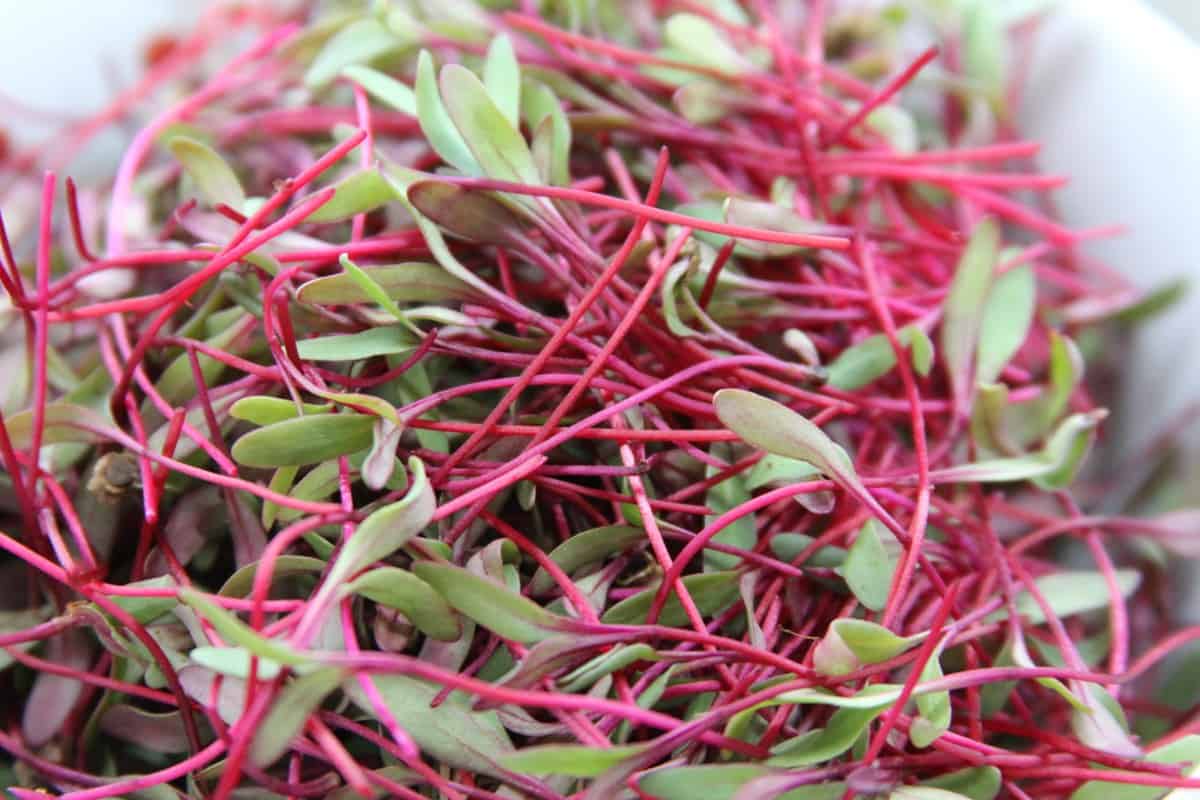
Salad seeds are often sold in a mix, including a variety of species. This is a great way to grow baby greens. Microgreen seed varieties are usually sold and grown separately.
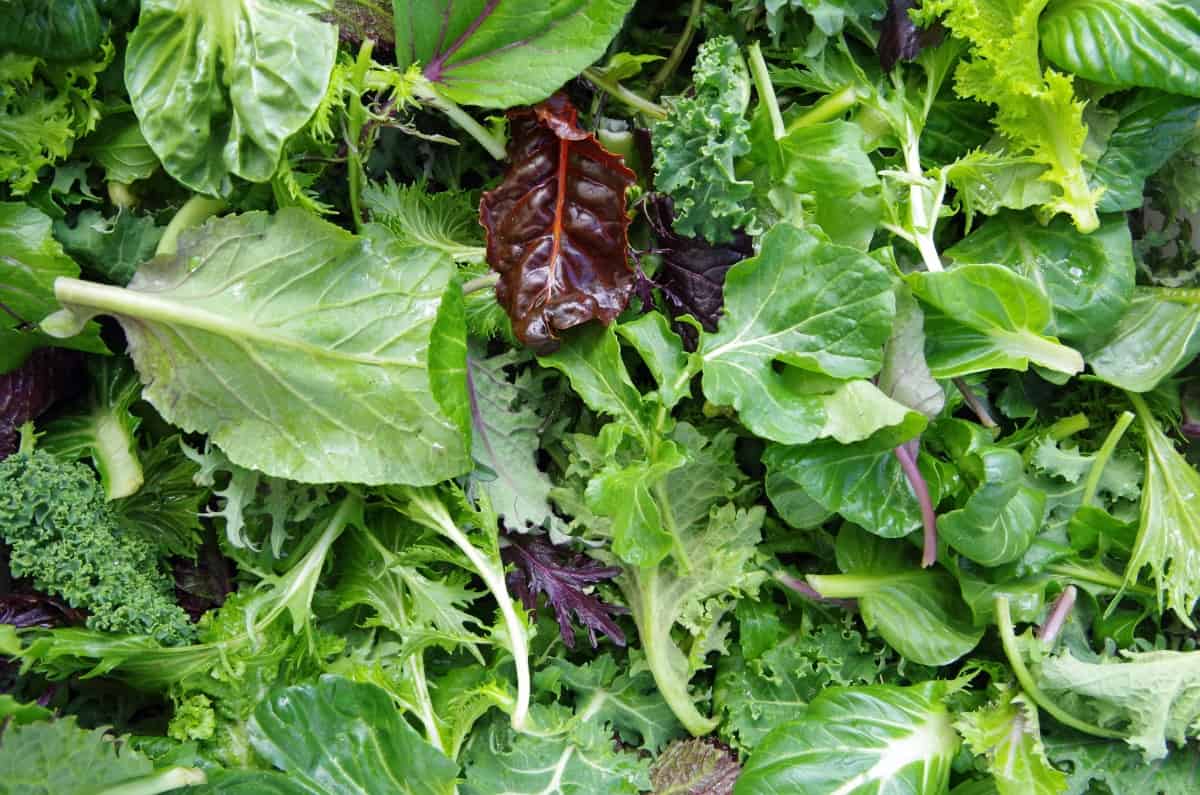
Microgreens, on the other hand, are grown from a larger variety of plants, and not just leafy greens and salad greens. Plants that are often grown as microgreens include radish, peas, cabbage, kale, mustard, basil, sunflower, amaranth, broccoli, and arugula.
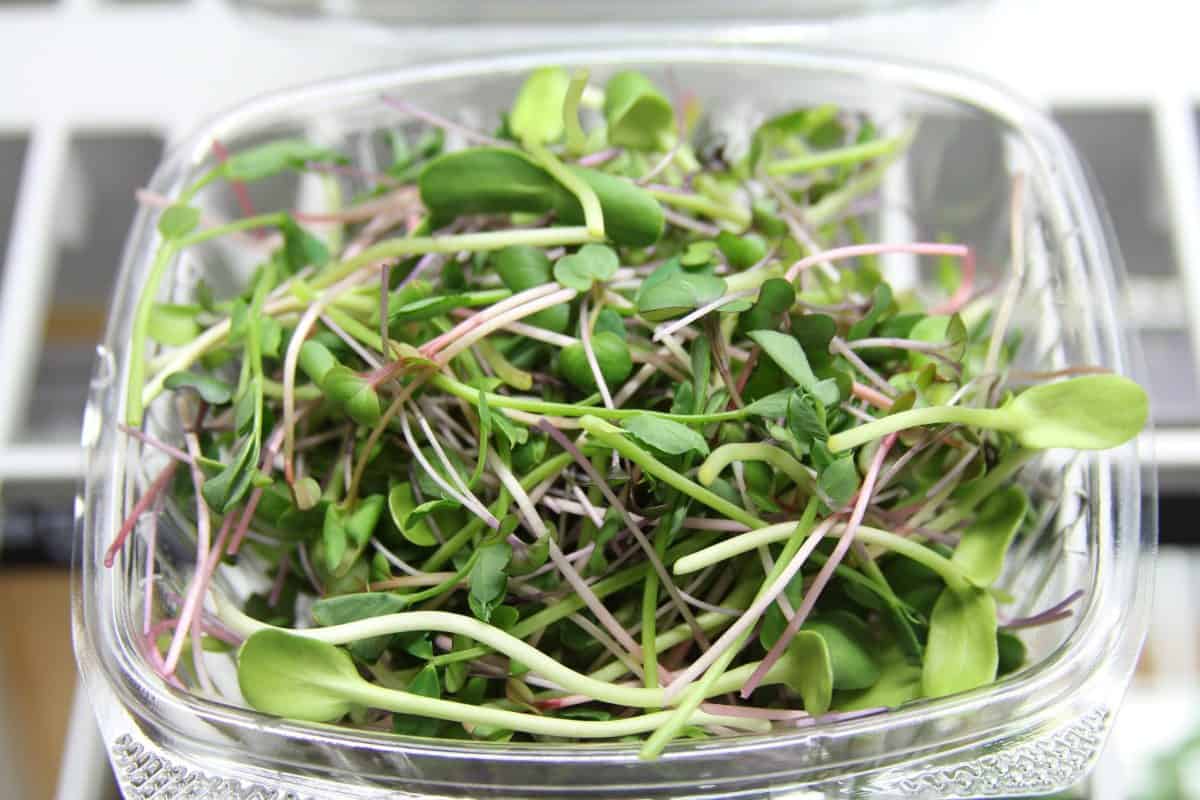
As you see, microgreens can be grown from grain, herb, and legume seeds. Unlike leafy green vegetables, the leaves of these plants are tastier when they are very small and tender, so they are mostly eaten as microgreens. If they are allowed to grow longer, the stems become too fibrous, losing their delicate texture.
When you buy seeds, it’s best to buy ones that are specifically designated as microgreen seeds. This will keep the guesswork out of what can be grown as a microgreen.
While many leafy greens can be grown both as microgreens and baby greens, some are better as baby greens. Lettuce microgreens are soft and fragile, and they are better grown into baby greens, without losing their tenderness. Spinach poses another problem: the seed hulls cling to the leaves, so harvesting them as microgreens will result in a lot of seed hulls. However, as they grow larger, the seed hulls will eventually fall off.
What’s the Difference Between Growing Microgreens and Baby Greens?
Soil and Water
Microgreens and baby greens require similar growing conditions. They can both be grown outdoors, in a greenhouse, or indoors. When growing them indoors, you usually need grow lights to supplement or replace natural light.
Both microgreens and baby greens can be grown in soil. A well-drained soil rich in organic matter will do well for both. For growing indoors, people often use potting soil. The seeds are sown on the surface and covered very lightly with soil. Many microgreen growers do not cover their seeds with soil at all, depending on the type of seed.
For germination, both microgreen and baby green seeds need warmth and regular, gentle watering that will not displace the seeds. Some growers use fine sprays, especially in the early stages. Watering from the bottom is also a very common practice.
Seed Density
The main difference in growing microgreens and baby greens is how densely the seeds are sown. Since microgreens will grow upwards and are usually much taller than wide, they are sown very densely. This not only maximizes the growing area, but the thin seedlings will also support each other as they grow.
The leaves of baby greens will take up more space not only vertically, but horizontally, so they need to be spaced less more generously. Often the seeds are sown more densely and then thinned out later as the plants grow. This is not necessary for microgreens.
Harvesting
Harvesting is most easily done using a knife or scissors for both microgreens and baby greens. They both can be harvested gradually, leaving some of the plants to grow larger. However, when grown commercially, microgreens are usually harvested all at once.
What is the Difference Between Using Microgreens and Baby Greens?
Baby greens are most frequently consumed raw as salad greens because most of the greens belong to various categories of lettuce. This is especially true for baby green salad mixes. Certain types of baby greens, such as kale, beet and chard can also be cooked. Since baby greens are more tender than their adult counterparts, they require very short cooking time. A few minutes of steaming or sautéing is enough to soften them. They can be eaten the same way as mature leafy greens: as a side dish, blended into a soup or sauce, added to other vegetables.
Most microgreens are also consumed raw, added to salads or sandwiches. Due to their decorative appearance, microgreens are often used to adorn many types of dishes including soups, pizza, casseroles, and even desserts. Some of the hardiest microgreens such as sunflower sprouts or pea shoots can also be sautéed and stir-fried Asian style.
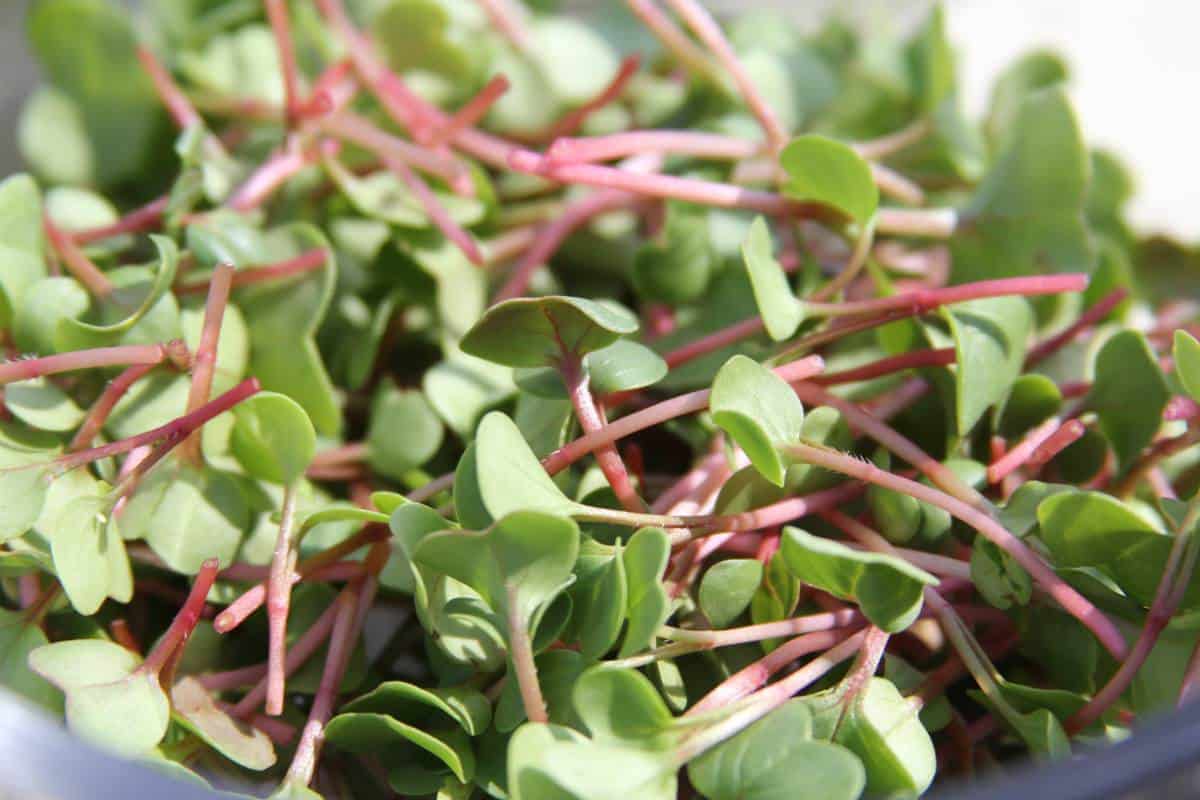
Microgreens can also be added to omelets, veggie burgers, and other cooked dishes, where they will provide specks of bright color and flavor. Some microgreens are rather spicy, such as radish, broccoli, and arugula, so they can spice up any dish.
Nutrition
According to some promising research, microgreens contain much higher amounts of nutrients than fully matured plants. According to a study, nutrient density can be 40 times higher in microgreens than in adult plants. Nutrients studied included vitamins A, C, E, K, lutein, and beta-carotene.
Whether baby greens have higher nutritional densities than fully mature plants is not clear due to the shortage of studies. It would be interesting to see how the nutritional content changes in each stage of development for these plants.
The bottom line is that both microgreens and baby greens are some of the healthiest and most nutritious plant foods, so it’s wise to include them in your diet and even try growing them in your kitchen or garden.
Related questions
Can you let your microgreens grow into baby greens?
Since microgreens are seeded very densely, to facilitate easy growing and harvest, they would get too crowded if you tried to let them grow into baby greens. It’s better to plant either one or the other and sow accordingly: denser for microgreens and more spacious for baby greens.
What’s the difference between sprouts and microgreens?
A sprout is a germinated seed that represents the earliest stage of the plant’s life before it develops into a microgreen. Sprouts are grown in the dark, without soil, in water. They germinate quickly and are allowed to grow for 2 to 3 days. Sprouts include the seed, root, stem and undeveloped leaves and the entire thing is eaten.
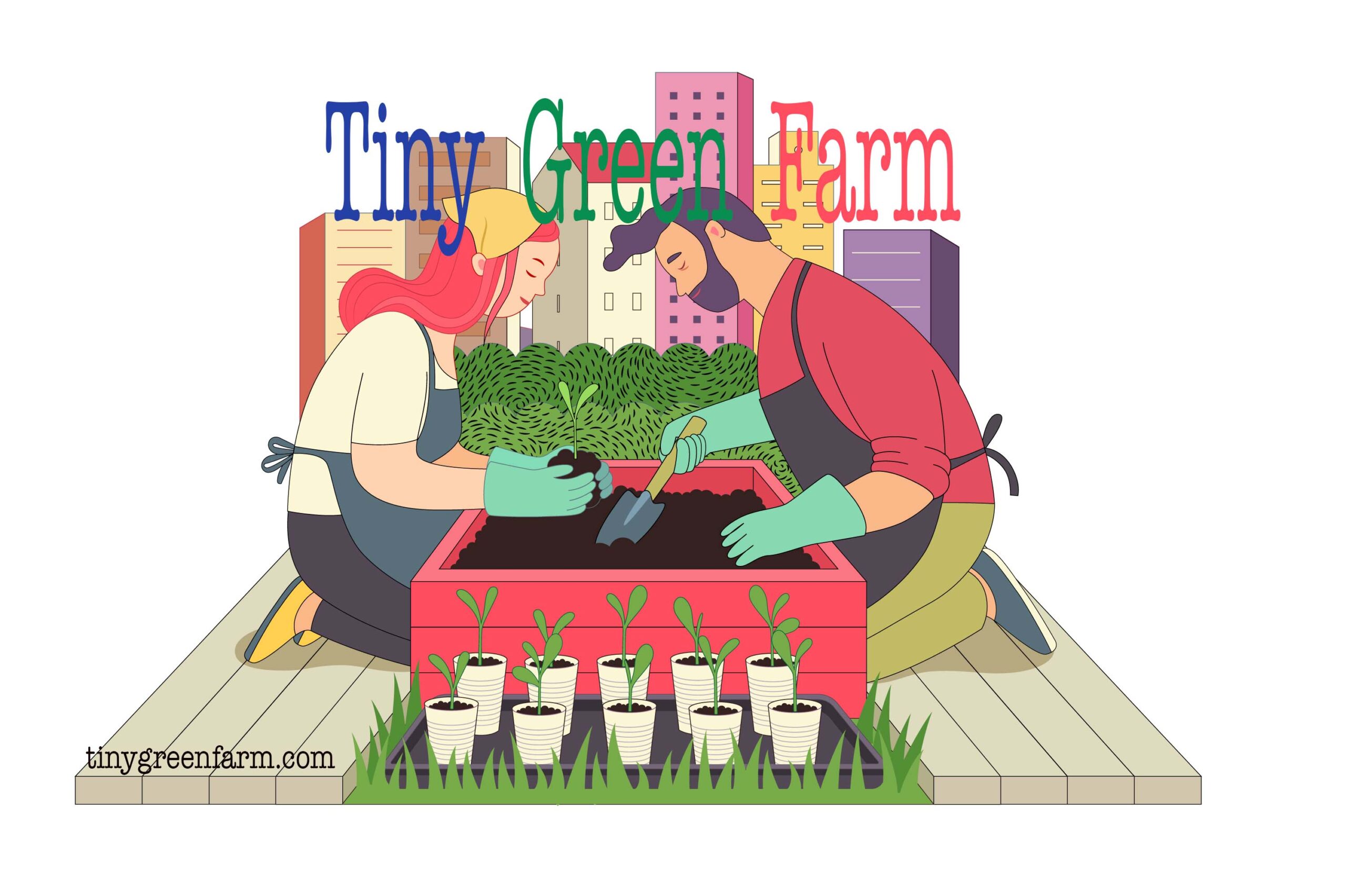
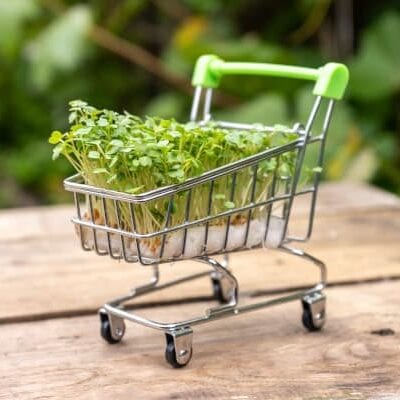
Leave a Reply